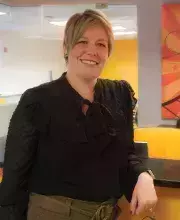Julie Parsons

Bio: Julie Parsons is the co-founder and managing director of District Marketing Group, specializing in full-service marketing for association events, education products and membership.
As we at District Marketing (formerly Fixation Marketing) mark the end of our first year in business, review the performance of our clients’ events and look at changes and opportunities in this post-pandemic environment, we are thinking a lot about trends.
So, having dug through some campaigns and surveyed our staff, we thought we’d share a list of some trends we’re seeing in trade show and event marketing.
A topline consideration in discussing trends is the ongoing challenge of predictive analysis, goal setting and pacing and strategy development following the COVID-19 pandemic shutdown of events worldwide. For an industry that depends on historical markers and attendee behavioral patterns, event organizers have spent the last year-plus throwing up question marks in trying to predict how a return to live events will go—factoring concerns about travel, crowds and reduced budgets into planning and messaging. Our strategy has been to stay aware of historical markers and pacing, take into careful consideration whether the event we’re promoting is the first, second or even third return to full in-person engagement, and then be nimble and expect some wildcard stats and metrics.
Another big factor in trend mining for 2022 was budgets. Many event organizers were talking about budget cuts, reallocations and incremental restoration, even as large media outlets and Nielsen reported an optimistic rebalancing of marketing efforts and budget surges from social media spend to paid digital, email and print.
In the trade show space, the best-case scenarios that we saw with respect to budgeting were shows/clients with one post-pandemic show under their belts, some metrics to assess and align with 2019/early 2020 events, and then a calibrated response to those attendance figures in marketing outreach and spend.
Okay, topline factors aside, let’s talk tactical trends. We relied on tried-and-true execution models and well-trodden paths a good deal in 2022 to ensure consistency and strengthen brand resonance and audience re-engagement. That said, we found growth for clients in some new methods within key channels and intermingled with best practices.
Across the board, the trend in messaging is to continue to be as genuine, human and customer-focused as possible in defining, promoting and fulfilling your event offering. The crisis communications points developed during the pandemic and resulting event cancellations have brought about an opportunity to continue open, person-to-person, no-BS messaging about your industry, what’s happening today and the vision for tomorrow.
You can implement this in several ways: change the tone and format of any year-end annual reporting, share exact numbers (i.e., 4,129) vs. a rounded promotional figure (4,000+), use your e-marketing and digital campaigns to micro-target, survey and curate content for individuals rather than painting with a broad brush.
This is somewhat related to the idea above, but more focused on creative and graphics. It’s a good time to tone down extra layers, images, textures and dare we say, clutter on deliverables. As one of our clients is fond of saying, “We just need our brand front and center, and space to clearly and concisely say what we need to say.” As events reconnect with their membership, attendees, exhibitors, sponsors and speakers, it’s ideal to limit noise—visually and verbally—and feature your brand and event as solid, resilient and the answer to industry needs.
This isn’t an endorsement for boring. One article that we loved described the approach as “creative pragmatism…a combination of joy and beauty and reality and logic.” And while some of that rings truer for consumer campaigns, the theory holds. Use your graphics, color palette, fonts and layouts to exude optimism, boldness and strength and stability while dispatching with marketing speak or anything superfluous to your event and brand.
While we’re suggesting playing it a bit safe yet strong with messaging and graphics, that doesn’t mean you have to remove innovation or creativity from your campaign. A few things that we’re seeing that work and keep things fresh include:
If you haven’t incorporated video more heavily into your campaign, you’re missing a great chance to incorporate a lot of the above trends—from authentic connection to simplicity in sharing messaging to revving up email engagement. Event organizers often have riches in b-roll video, testimonial and interview reel and other video assets that they pay for and have little time to edit, produce and reuse. But it’s easier now to find a cost-effective post-production team to turn your hours of b-roll into full-length and snippet video for website, media, paid and organic social and email. And, you have all the “talent” you need to amplify content by engaging your speakers, exhibitors and attendees on social. There are great apps and online services that allow you to request video testimonials and “excited to attend” snippets and then catalog them for your use in marketing.
*Source: Nielsen Global annual marketing report 2022
** Be sure to test ESP capabilities
Don’t miss any event-related news: Sign up for our weekly e-newsletter HERE, listen to our latest podcast HERE and engage with us on Twitter, Facebook and LinkedIn!
